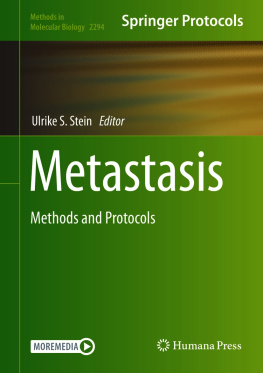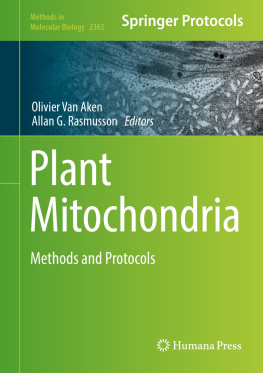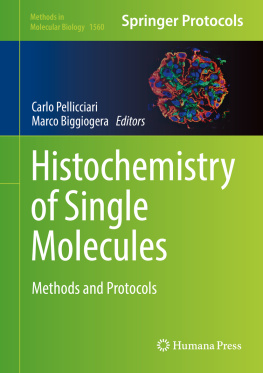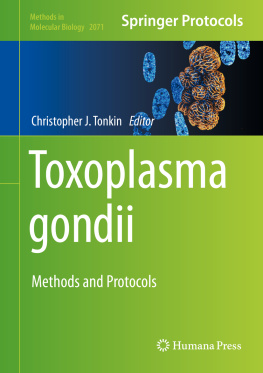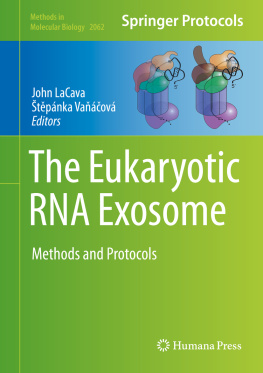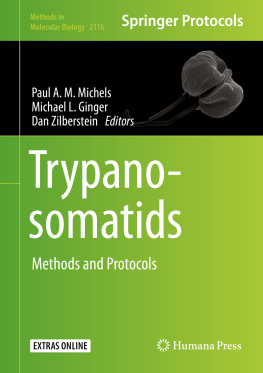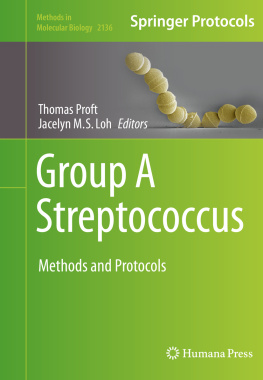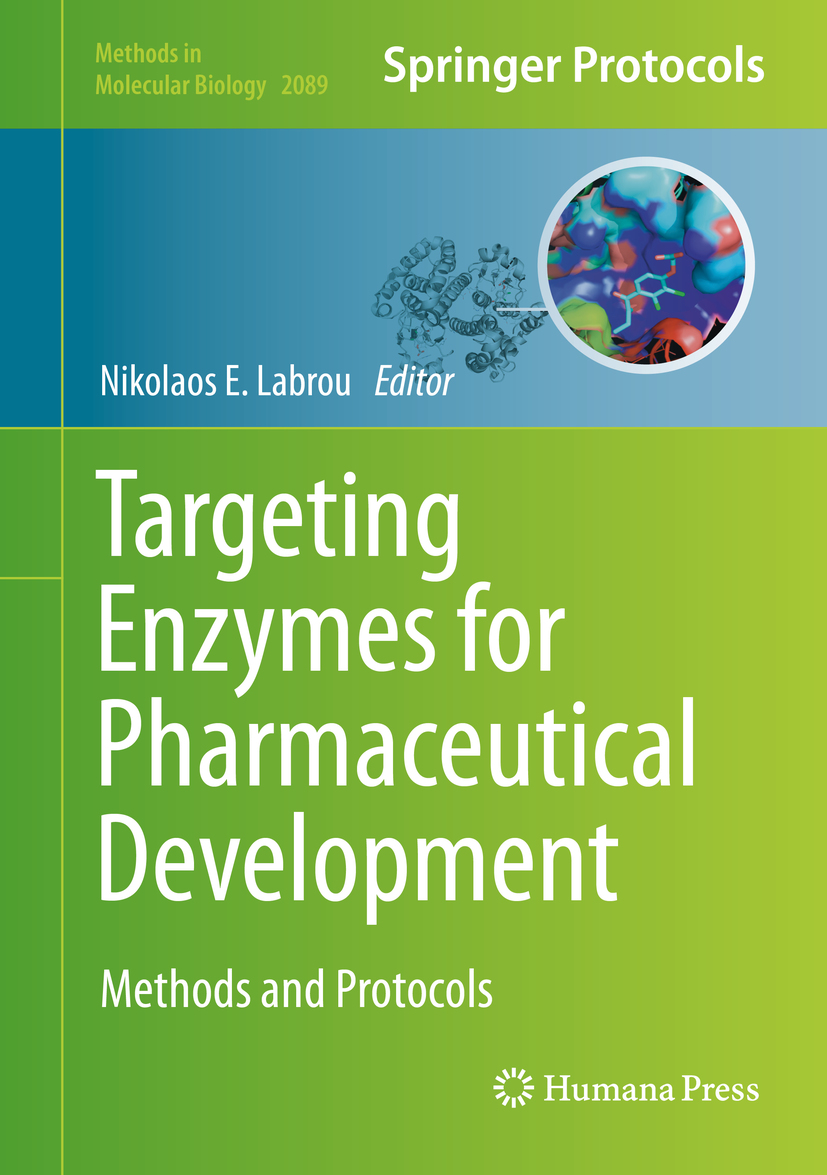Volume 2089
Methods in Molecular Biology
Series Editor
John M. Walker
School of Life and Medical Sciences, University of Hertfordshire, Hatfield, Hertfordshire, UK
For further volumes: http://www.springer.com/series/7651
For over 35 years, biological scientists have come to rely on the research protocols and methodologies in the critically acclaimedMethods in Molecular Biologyseries. The series was the first to introduce the step-by-step protocols approach that has become the standard in all biomedical protocol publishing. Each protocol is provided in readily-reproducible step-by-step fashion, opening with an introductory overview, a list of the materials and reagents needed to complete the experiment, and followed by a detailed procedure that is supported with a helpful notes section offering tips and tricks of the trade as well as troubleshooting advice. These hallmark features were introduced by series editor Dr. John Walker and constitute the key ingredient in each and every volume of theMethods in Molecular Biologyseries. Tested and trusted, comprehensive and reliable, all protocols from the series are indexed in PubMed.
Editor
Nikolaos E. Labrou
Targeting Enzymes for Pharmaceutical Development
Methods and Protocols
Editor
Nikolaos E. Labrou
Department of Biotechnology, Agricultural University of Athens, Athens, Greece
ISSN 1064-3745 e-ISSN 1940-6029
Methods in Molecular Biology
ISBN 978-1-0716-0162-4 e-ISBN 978-1-0716-0163-1
https://doi.org/10.1007/978-1-0716-0163-1
The chapter EnzymeLigand Interaction Monitored by Synchrotron Radiation Circular Dichroism is licensed under the terms of the Creative Commons Attribution 4.0 International License (http://creativecommons.org/licenses/by/4.0/). For further details see licence information in the chapter.
Springer Science+Business Media, LLC 2020
This work is subject to copyright. All rights are reserved by the Publisher, whether the whole or part of the material is concerned, specifically the rights of translation, reprinting, reuse of illustrations, recitation, broadcasting, reproduction on microfilms or in any other physical way, and transmission or information storage and retrieval, electronic adaptation, computer software, or by similar or dissimilar methodology now known or hereafter developed.
The use of general descriptive names, registered names, trademarks, service marks, etc. in this publication does not imply, even in the absence of a specific statement, that such names are exempt from the relevant protective laws and regulations and therefore free for general use.
The publisher, the authors, and the editors are safe to assume that the advice and information in this book are believed to be true and accurate at the date of publication. Neither the publisher nor the authors or the editors give a warranty, express or implied, with respect to the material contained herein or for any errors or omissions that may have been made. The publisher remains neutral with regard to jurisdictional claims in published maps and institutional affiliations.
This Humana imprint is published by the registered company Springer Science+Business Media, LLC, part of Springer Nature.
The registered company address is: 233 Spring Street, New York, NY 10013, U.S.A.
Preface
Drug development is the process of bringing a new pharmaceutical drug to the market once a lead compound has been identified through the process of drug discovery. Enzymes offer unique opportunities for drug discovery, as they are one of the most important groups of drug targets. Many of the significant biochemical processes in the cell are enzyme-catalyzed reactions (biosynthesis and catabolism) or specific cellular signaling pathways that enzymes are involved with. Several important diseases are often associated with the elevation or repression of certain enzymes. The attractiveness of enzymes as targets for drug discovery stems from their high levels of disease association (target validation) and druggability (target tractability), which typically characterize this class of proteins. In general, drug discovery starts by manipulating the target enzyme with a compound that usually leads to inhibition or activation of its catalytic activity. Today, there are seventy-one human, bacterial, viral, and fungal enzymes that have been used successfully for the development of currently marketed clinically utilized drugs. All these drugs act as reversible or irreversible enzyme inhibitors.
This volume contains methods and detailed experimental protocols on the evaluation of the effect of a compound or a mixture of compounds on the action of enzymes that are significant targets in pharmaceutical industry. It examines the most reliable and robust methods for both bench and R&D scientists and sets a standard for best practices in the field. This volume consists of three different sections, each of which deals with different steps in the process from target selection and compound design to inhibitor evaluation. The first section presents biocomputing and bioinformatics protocols that have been developed recently. It underlines the progress in this area and points out the advantages that enzymologists and medicinal chemists can exploit for new target selection, druggability assessment, and structure-based design. The next section contains a selection of the state-of-the-art modern biophysical, electrophoretic, and chromatographic methods and high-throughput screening approaches that have been developed and are currently used for the assessment of enzyme/inhibitor interaction. The subsequent section provides detailed protocols and examples of the inhibition analysis and evaluation of selected enzymes. It contains critical information on enzyme structure-function relationships as well as mechanistic aspects on how these enzymes are inhibited.
This volume has been written by international scientists, who are active in biochemical and biomedical research, with expertise in chemistry, protein biochemistry, enzymology, molecular biology, and genetics. While it is not possible to detail and include every possible method and protocol related to enzyme inhibition, the present volume attempts to provide working tips with examples and analysis relevant to a wide range of more important enzyme targets and commonly available enzyme inhibition techniques and protocols.
The present book would definitely be an ideal source of scientific information for advanced students, junior researchers, and scientists involved in health sciences, cellular and molecular biology, biochemistry, biotechnology, cosmetology, and other related areas in academia. It is also aimed at professionals including academic faculty members, industrial scientists, and anyone working in the pharmaceutical, food, and cosmetics industries.
I sincerely hope that the reader will enjoy the information provided in this book and find its contents interesting and scientifically stimulating. I also hope that I have established a successful compilation of chapters within the exciting area of enzymes as drug targets. I would like to thank all the contributing authors for their enthusiasm and for the time they spent preparing the chapters for this book. I would also like to thank Dr. John Walker, the series editor, for his help and encouragement, and everybody at Springer for their helpful advice and support. I would especially like to thank my family for their understanding and patience during the editing and organization of the book chapters.



